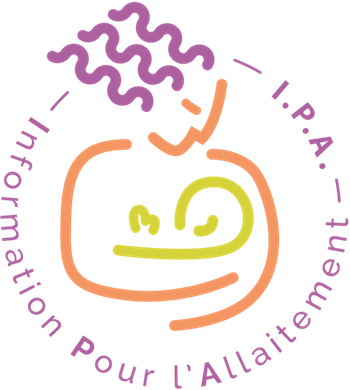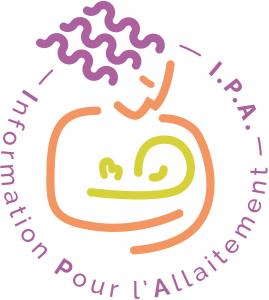Catégories
Documents disponibles dans cette catégorie (137)
Bulletin : texte imprimé
Les Dossiers de l'Allaitement, n°147 - Juin 2019
La Leche league France, Auteur | 2019Article : texte imprimé
Amy Brown, Auteur ; Sue Jordan, Auteur |Background: Evidence is growing that active management of the third stage of labor using prophylactic uterotonics may be associated with lower breastfeeding rates. The reasons underlying this relationship are incompletely understood. The aim of [...]Article : texte imprimé
Ryoko Pentecost, Auteur ; Jane S. Grassley, Auteur |Background: Increasing the number of infants who are breastfed has become a worldwide health priority because of the extensively documented health and economic benefits of breastfeeding for mothers and their children. It is unfortunate that ado[...]Article : texte imprimé
Article : texte imprimé
Breastfeeding initiation rates in developed countries are steadily increasing, in part due to successful breastfeeding promotion campaigns and practices supportive of early breastfeeding, yet breastfeeding duration rates remain low. This disconn[...]Article : texte imprimé
Alison M. Stuebe, Auteur ; Briana J. Jegier, Auteur ; Eleanor B. Schwarz, Auteur |Objective: We sought to determine the impact of changes in breastfeeding rates on population health. Materials and Methods: We used a Monte Carlo simulation model to estimate the population-level changes in disease burden associated with marg[...]Article : texte imprimé
Casey Rosen-Carole, Auteur ; Eve Waltermaurer, Auteur ; Monet Goudreault, Auteur |Background: Provider attitudes can influence breastfeeding decision making, initiation, and duration, although much of this research has suffered from a “hospital-limited view.” Objectives: This study aimed to evaluate the effect of a Breas[...]Article : texte imprimé
Zelalem T. Haile, Auteur ; Reena Oza-Franck, Auteur ; Ilana R. Azulay Chertok, Auteur |Background: Exclusive breastfeeding is recommended in the first 6 months of life, especially for infants born to women with a history of gestational diabetes mellitus (GDM). Yet, women with a history of GDM face challenges with exclusive breast[...]Article : texte imprimé
Hege Grundt, Auteur ; Bente Silnes Tandberg, Auteur ; Renée Flacking, Auteur |Background Hospitalization in neonatal intensive care units with a single-family room design enables continuous maternal presence, but less is known regarding the association with milk production and breastfeeding. Research aim To compare m[...]Article : texte imprimé
Chuan-Ming Li, Auteur ; Li Ruowei, Auteur ; Cindy G. Ashley, Auteur |Background: In 2009, the Centers for Disease Control and Prevention implemented the Maternity Practices in Infant Nutrition and Care (mPINC) survey in all US birth facilities to assess breastfeeding-related maternity practices. Maternity practi[...]Article : texte imprimé
Geneviève Ritchie Ewing, Auteur ; Amanda M. Mitchell, Auteur ; Lisa M. Christian, Auteur |Background: Breastfeeding plays an important role in both maternal and infant health and well-being. While researchers have examined the relationship between postpartum psychological distress and breastfeeding behaviors, few have investigated l[...]Article : texte imprimé
Rachel Eni, Auteur ; Wanda Phillips-Beck, Auteur ; Punam Mehta, Auteur |Background: In Canada, First Nations women are far less likely to breastfeed than other women. First Nations people have been subjected to massive health and social disparities and are at the lowest end of the scale on every measure of well-bein[...]Article : texte imprimé
AK Anderson, Auteur ; Evan Johnson, Auteur ; Nicole Motoyasu, Auteur |Background: Over the past 2 decades, southern states in the United States have recorded the lowest breastfeeding rates. It is not known whether awareness of breastfeeding laws and provision of resources play any role in their breastfeeding prac[...]Article : texte imprimé
Miguel A. Marín Gabriel, Auteur ; Laura Domingo Goneche, Auteur ; Irene Cuadrado Pérez, Auteur |Background: Adherence to the Ten Steps of the Baby-Friendly Hospital Initiative has been shown to have a protective role for the initiation and maintenance of breastfeeding. Research Aims: (1) To determine the breastfeeding rate during the [...]Article : texte imprimé
Anita Gupta Hurwitz, Auteur ; Phillip R. Farrow, Auteur ; Genevieve Preer, Auteur |Background: The deleterious effect of formula company–sponsored discharge bags on breastfeeding is well established. As of July 2012, all 49 maternity facilities in Massachusetts had banned these bags, making it the second “bag-free” state in th[...]Article : texte imprimé
Amy M. Johnson, Auteur ; Alissa Correll, Auteur ; John F. Greene, Auteur |Despite the known health benefits for mother and infant, compliance with exclusive breastfeeding continues to challenge many healthcare providers. In an ongoing attempt to maintain the goals of the Healthy People 2010 initiative, our institution[...]Article : texte imprimé
Julie L. Ware, Auteur ; Larita Webb, Auteur ; Marian Levy, Auteur |Breastfeeding is recommended exclusively for the first 6 months of life, with continuation after the addition of complementary foods for at least 1 year of life. Breastfeeding rates are low in the Southeastern United States, especially among Afr[...]Article : texte imprimé
Iva Burinova, Auteur ; Katarina Kulihova, Auteur ; Veronika Vitkova, Auteur |Background: Goals of treatment of orofacial cleft are to improve feeding, speech, hearing, and facial appearance. Early surgery brings faster healing, better cosmetic effect, and fewer complications. Breastfeeding rates after early surgery are [...]Article : texte imprimé
Heather L. Sipsma, Auteur ; Krista L. Jones, Auteur ; Heather Cole-Lewis, Auteur |Despite growing evidence of the benefits of breastfeeding, rates of breastfeeding remain disproportionately low among adolescent mothers compared with older mothers in the United States. Current interventions primarily target adult women, and li[...]Article : texte imprimé
Osman Sabuncuoglu, Auteur ; Cahid Orengul, Auteur ; Alperen Bikmazer, Auteur |Introduction: Although children with attention-deficit/hyperactivity disorder (ADHD) were reported to have insufficient breastfeeding, consequences and oropharyngeal implications of this finding have not been studied. In this case-control study,[...]Article : texte imprimé
Breastfeeding, Antidepressants, and Depression in the Mercy Pregnancy and Emotional Well-Being Study
Megan Galbally, Auteur ; Stuart J. Watson, Auteur ; Helen L. Ball, Auteur |"Background: Depression is consistently shown to predict lower rates of breastfeeding. In a handful of studies, breastfeeding has predicted lower depression symptoms. However, studies demonstrating the latter are limited in their measurement of[...]Article : texte imprimé
Kristen Mitchell-Box, Auteur ; Kathryn L. Braun, Auteur ; Eric L. Hurwitz, Auteur |Breastfeeding is considered the best infant feeding method, yet initiation and duration rates in the United States are lower than recommended by medical and public health professionals. Positive attitudes toward breastfeeding of the male partner[...]Article : texte imprimé
Jan Coles, Auteur ; Amy Anderson, Auteur ; Deborah Loxton, Auteur |Background: Childhood sexual abuse (CSA) is prevalent across the world. Childhood sexual abuse is associated with poorer health, but information on its impact on breastfeeding is limited. In this study, the authors investigated the link between[...]Article : texte imprimé
Erin McElderry Bascom, Auteur ; Melissa A. Napolitano, Auteur |Background: Although postpartum depression is associated with lower breastfeeding initiation rates and shorter breastfeeding duration, the potential mechanisms through which this relationship functions are not well understood. Objective: Th[...]


























